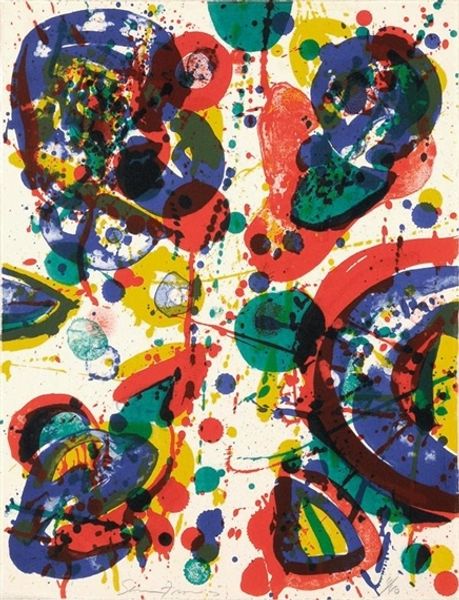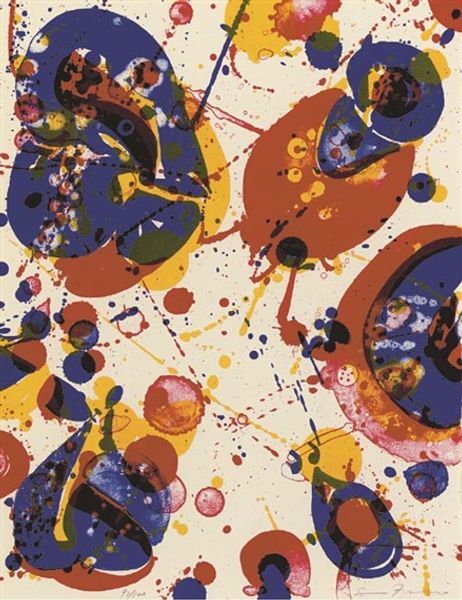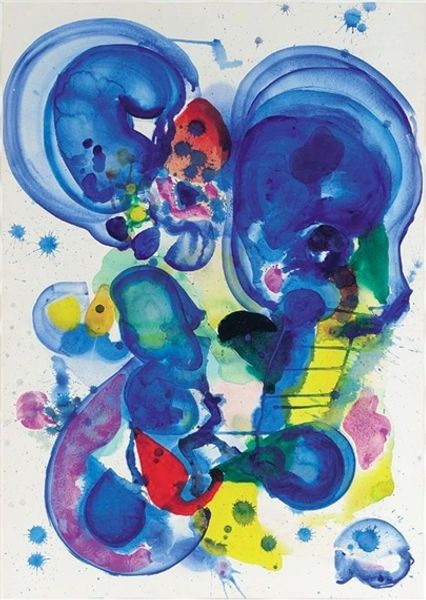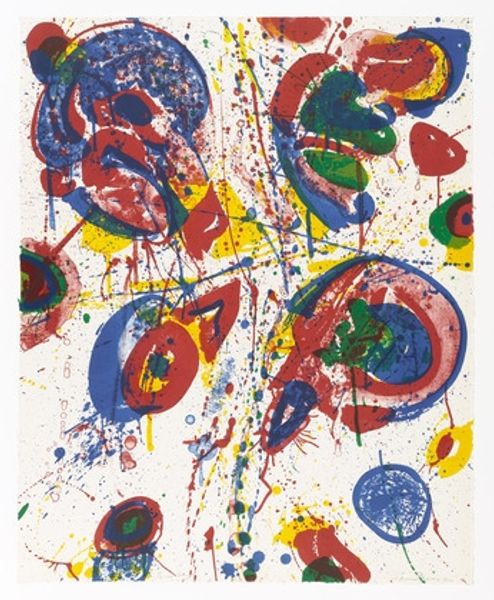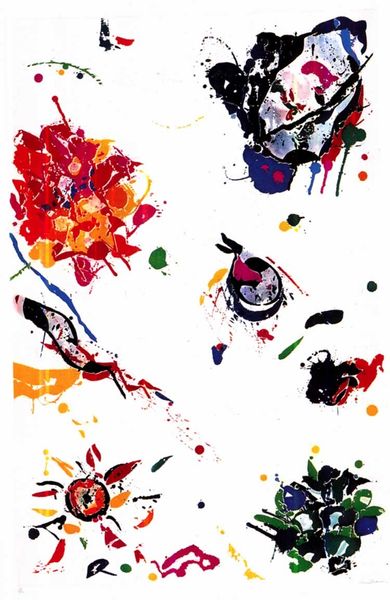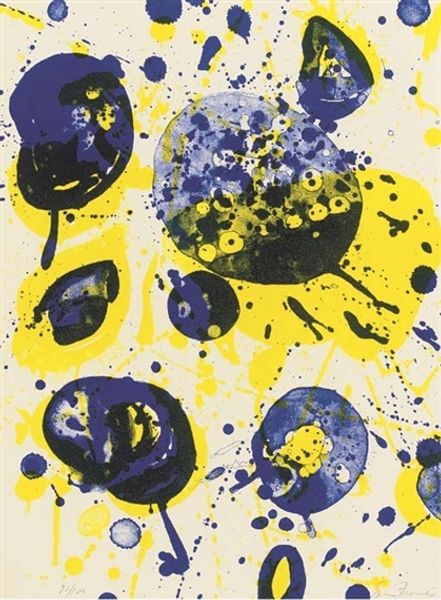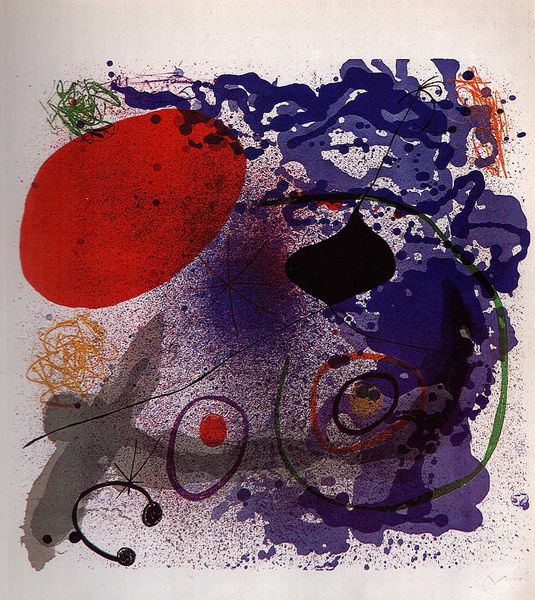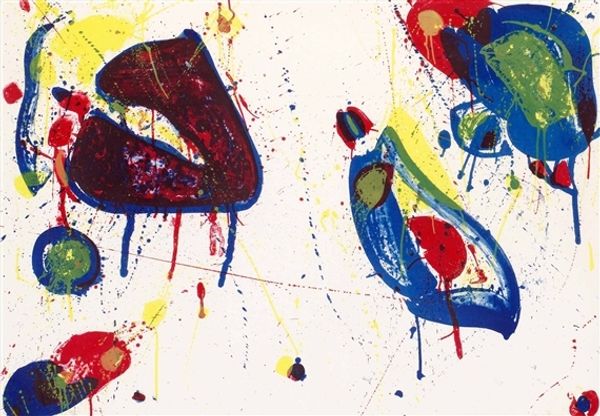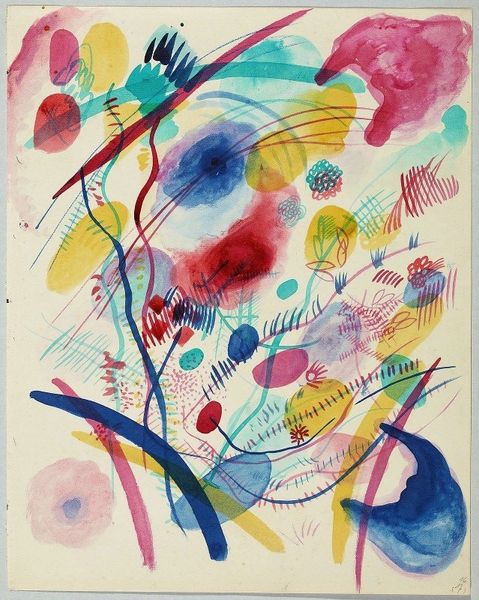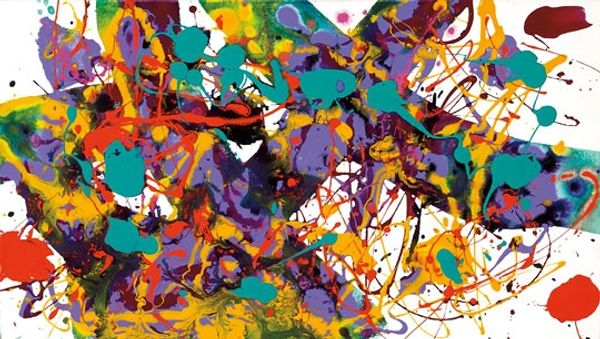
acrylic-paint
#
abstract-expressionism
#
naturalistic pattern
#
organic
#
random pattern
#
pattern
#
colour-field-painting
#
acrylic-paint
#
abstract pattern
#
organic pattern
#
flower pattern
#
abstraction
#
pattern repetition
#
layered pattern
#
funky pattern
#
pattern in nature
#
combined pattern
#
modernism
Copyright: 2012 Sam Francis Foundation, California / Artists Rights Society (ARS), NY
Curator: Looking at this work by Sam Francis, “Untitled (from Pasadena Box)," created in 1963, one immediately notes his dynamic approach to abstraction with acrylic paint. Editor: It feels joyously chaotic! The colours explode off the surface in such an unrestrained way. Is that purely accidental, or do you perceive underlying strategies at work? Curator: While Francis embraced spontaneity, the historical context of the mid-century is key. Post-war America saw artists like Francis, along with his contemporaries in the Color Field movement, exploring gesture and chromatic intensity as forms of emotional expression and spiritual exploration. Consider the political upheaval—the Civil Rights Movement gaining momentum, the Cold War looming. Abstract Expressionism can be interpreted as both a refuge from, and a sublimated response to, societal tensions. Editor: I see what you mean. One could argue that the apparent "randomness" echoes the unpredictable nature of life itself, particularly relevant given those Cold War anxieties. Thinking about the art market's role, it’s fascinating how these very abstract works became emblems of American freedom and individualism. Did Francis's works carry any political weight in their reception or was that attributed to him? Curator: The narratives that coalesce around abstraction are so revealing. Although Francis might not have been overtly political, his departure from figuration itself was read as an act of liberation. His work can be viewed through the lens of post-modernism; its subversion of traditional art norms represents that departure. What did liberation really mean to underrepresented folks at the time, like Black women, whose access to those cultural institutions exhibiting artists like Francis was severely restricted? We need to consider art consumption and the structures that promote certain figures at the exclusion of others. Editor: Right, it pushes us to interrogate the power dynamics at play within the art world and society at large, a reflection we must make more often when looking at these pieces. Curator: Precisely. Ultimately, revisiting works like these enables us to rethink these artists' historical contributions alongside more inclusive dialogues. Editor: Indeed, considering the narratives surrounding the artwork as a product of the socio-political system gives insight into our own biases as interpreters of art history.
Comments
No comments
Be the first to comment and join the conversation on the ultimate creative platform.

